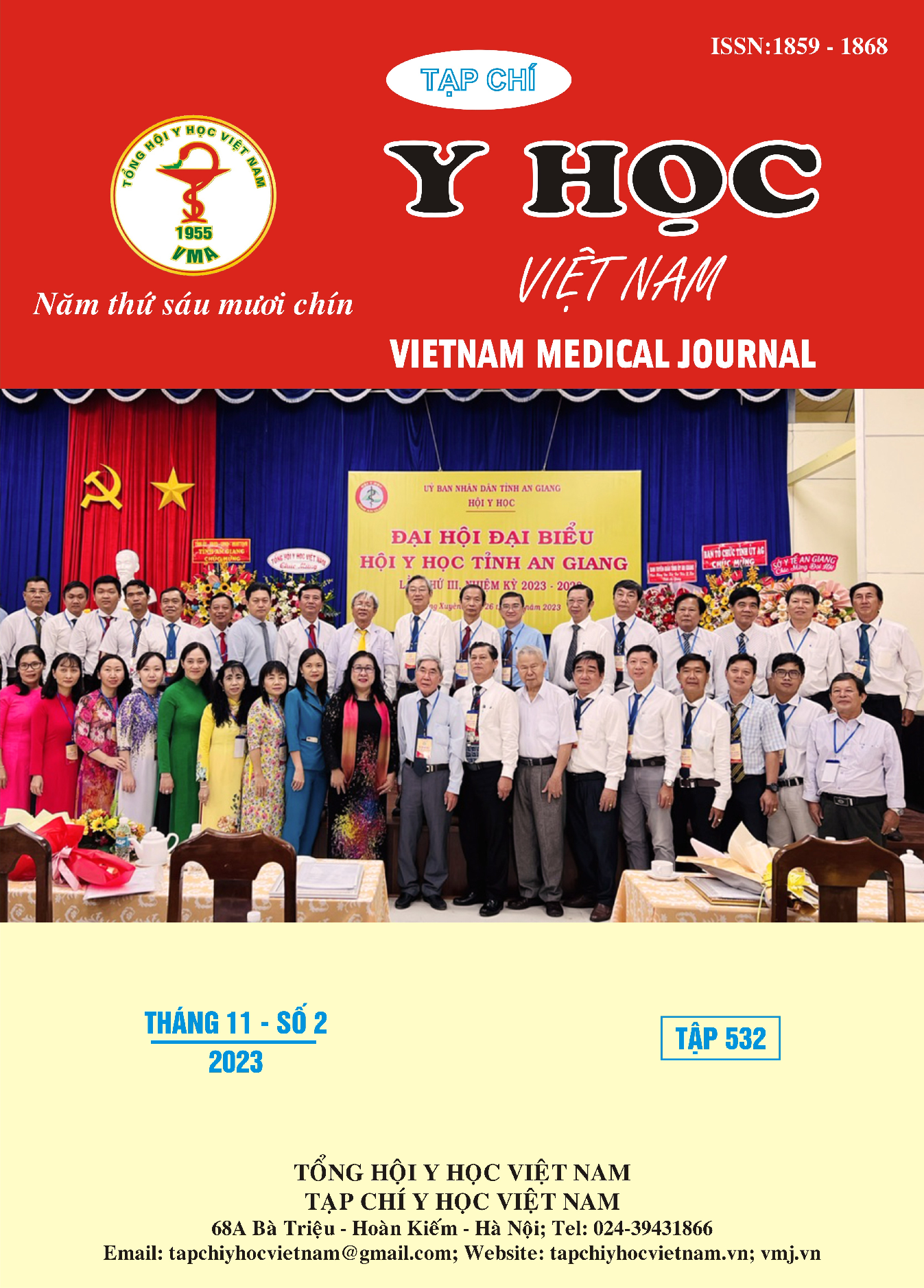SỰ BỘC LỘ DẤU ẤN HÓA MÔ MIỄN DỊCH P16 VÀ P53 TRONG CÁC TỔN THƯƠNG NỘI BIỂU MÔ VẢY CỔ TỬ CUNG ĐỘ CAO
Nội dung chính của bài viết
Tóm tắt
Mục tiêu: Xác định mức độ bộc lộ dấu ấn hóa mô miễn dịch p16 và p53 trong các tổn thương nội biểu mô vảy cổ tử cung độ cao tại bệnh viện Phụ sản Trung Ương. Đối tượng và phương pháp nghiên cứu: Nghiên cứu mô tả cắt ngang thực hiện trên 92 bệnh nhân được chẩn đoán tổn thương nội biểu mô vảy cổ tử cung độ cao. Thời gian từ tháng 6 đến tháng 10 năm 2020 tại bệnh viện Phụ sản Trung Ương. Kết quả và kết luận: Tuổi trung bình của các đối tượng nghiên cứu 38.4± 9.6.Tỷ lệ nhuộm p16 dương tính của tổn thương CIN 2 và CIN 3 lần lượt là 78,6% và 98,0%. Tỷ lệ bộc lộ p53 của tổn thương CIN 2 và CIN 3 lần lượt là 59,5% và 36,0% (p<0,05).
Chi tiết bài viết
Từ khóa
Tổn thương nội biểu mô cổ tử cung độ cao; p16; p53
Tài liệu tham khảo
2. Galgano MT, Castle PE, Atkins KA, Brix WK, Nassau SR, Stoler MH. Using Biomarkers as Objective Standards in the Diagnosis of Cervical Biopsies. Am J Surg Pathol. 2010;34(8):1077-
1087. doi:10.1097/PAS.0b013e3181e8b2c4
3. Kishore V, Patil AG. Expression of p16INK4A Protein in Cervical Intraepithelial Neoplasia and Invasive Carcinoma of Uterine Cervix. J Clin Diagn Res JCDR. 2017;11(9): EC17-EC20. doi: 10.7860/ JCDR/2017/29394.10644
4. Grace VMB, Shalini JV, lekha TTS, Devaraj SN, Devaraj H. Co-overexpression of p53 and bcl-2 proteins in HPV-induced squamous cell carcinoma of the uterine cervix. Gynecol Oncol. 2003;91(1): 51- 58. doi: 10.1016/ s0090-8258(03) 00439-6
5. Lê Quang Vinh, Đàm Thị Quỳnh Liên, Lưu Thị Hồng. Tình trạng nhiễm HPV nguy cơ cao ở những phụ nữ có tổn thương tân sản nội biểu mô và ung thư cổ tử cung. Tạp Chí Phụ Sản. 2017;15(2):125-129.
6. Izadi-Mood N, Asadi K, Shojaei H, et al. Potential diagnostic value of P16 expression in premalignant and malignant cervical lesions. J Res Med Sci Off J Isfahan Univ Med Sci. 2012;17(5):428-433.
7. Lee S, Kim H, Kim H, Kim C, Kim I. The Utility of p16INK4a and Ki-67 as a Conjunctive Tool in Uterine Cervical Lesions. Korean J Pathol. 2012;46(3): 253-260. doi: 10.4132/ KoreanJ Pathol.2012.46.3.253
8. Ghosh D, Roy AK, Murmu N, Mandal S, Roy
A. Risk Categorization with Different Grades of Cervical Pre-Neoplastic Lesions - High Risk HPV Associations and Expression of p53 and RARβ. Asian Pac J Cancer Prev APJCP. 2019;20(2):549- 555. doi:10.31557/APJCP.2019.20.2.549
9. Silva D, da Silveira Gonçalves de Oliveira A, Cobucci R, Mendonça R, Lima P, Cavalcanti Jr G. Immunohistochemical expression of p16, Ki-
67 and p53 in cervical lesions - A systematic review. Pathol - Res Pract. 2017;213. doi:10.1016/j.prp.2017.03.003


